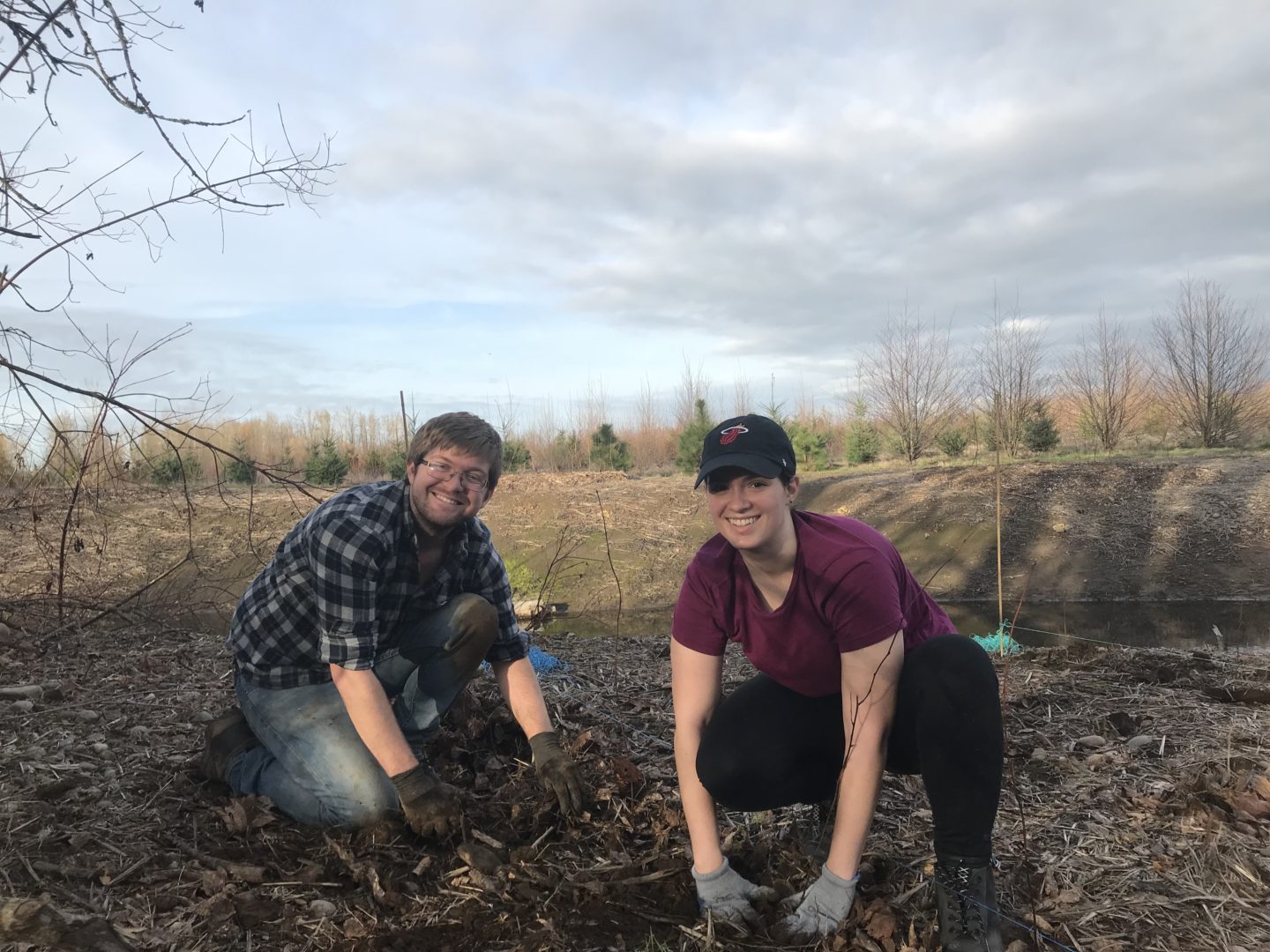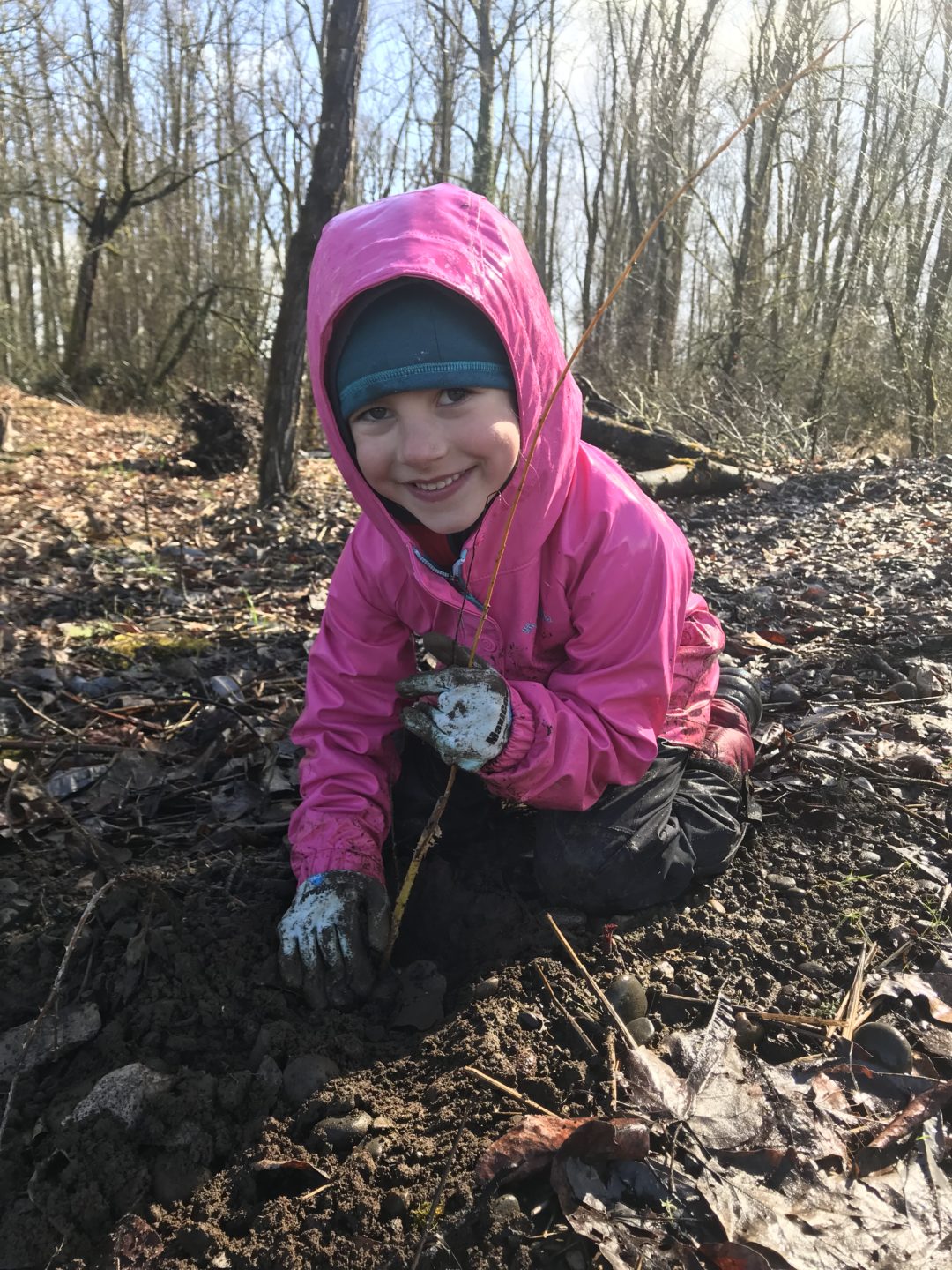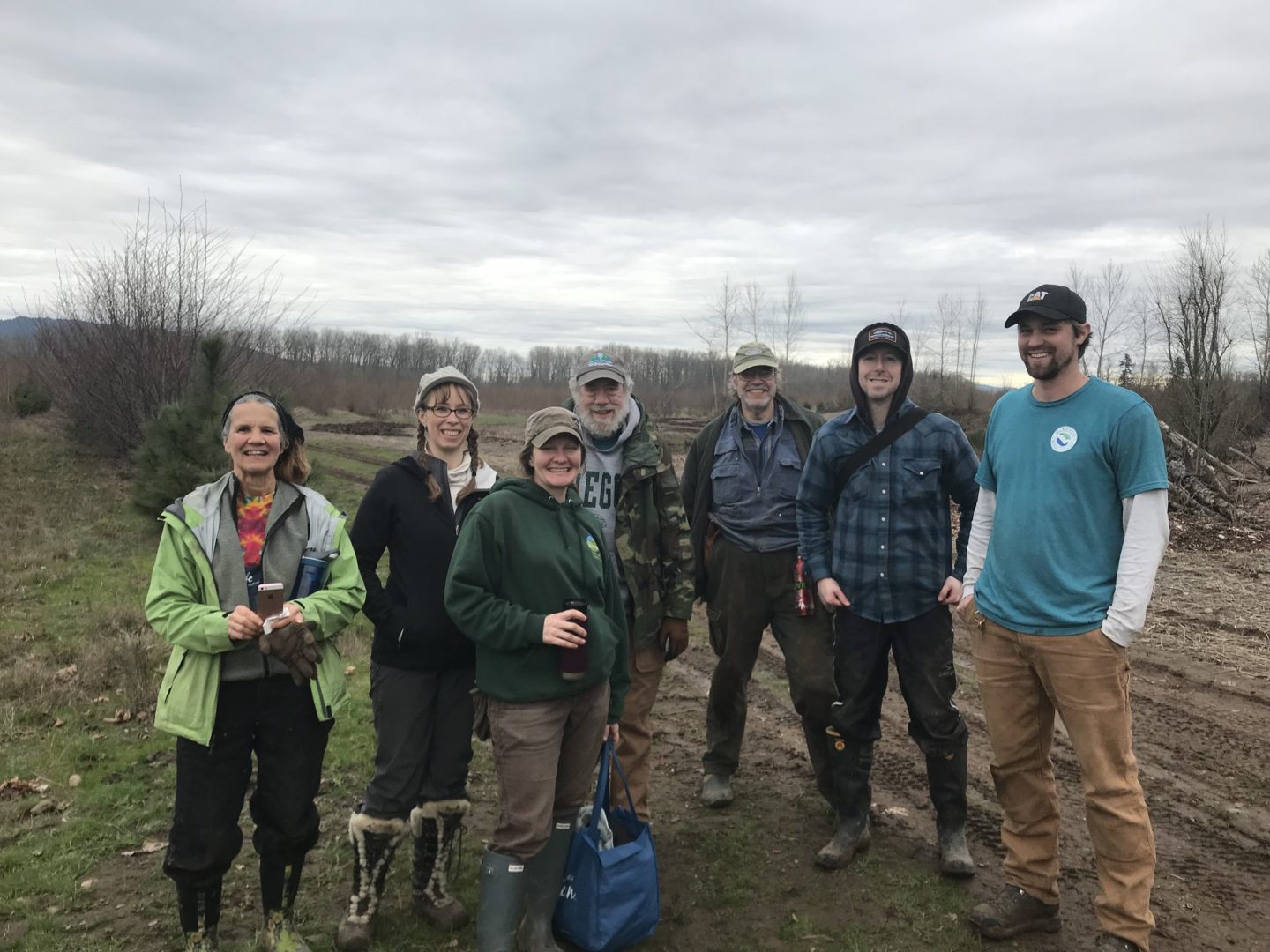
Trees and more trees, along with grasses and shrubs — all native Oregon plants — are key to ensuring a healthy future for the rivers in the South Willamette Valley. And in turn, that means a healthy future for all of us. The floodplain forest on Green Island, near the confluence of the McKenzie and Willamette Rivers, is a major restoration project managed by the McKenzie River Trust. It’s supported by hard working volunteers and generous donors like you. This winter, we added over two hundred thousand new stems to the forest there.
Volunteers on the ground

A young volunteer plants a tree on Green Island. Photo by Elizabeth Goward.
To kick off February, volunteers put on their boots and rolled up their sleeves to plant 5,000 bare-root trees and shrubs over several days on the south end of Green Island. These plantings continue the efforts throughout the past winter to re-vegetate areas impacted by construction that re-connected an alcove of the main stem of the Willamette to an historic McKenzie channel. Next, MRT staff planted the remainder of the trees and shrubs, including potting about 1,000 plants for future volunteer events.
In addition to the work in the south, contractors planted over 260,000 trees and shrubs over the winter on the north end of the property. Since 2006, MRT has restored hundreds of acres of floodplain forest or riparian habitat. In all, we’ve planted more than half a million native trees and shrubs on Green Island. Many more are yet to come.
Because of strong member support over many years, these trees will grow to become a gallery forest and provide refuge for birds, bugs, frogs, beavers, and all the creatures that visit and live on this land.
Focused investment, big results
The project is part of the Willamette Focused Investment Partnership. This basin-wide effort helps restore the Willamette River from its headwaters to its mouth at the Columbia. The Oregon Watershed Enhancement Board, Bonneville Power Administration, and Meyer Memorial Trust’s Willamette River Initiative provide the major institutional support and grant funding. The collective effort includes coordinated work by land trusts, watershed councils, riverkeepers, universities, and friends groups.

A volunteer crew from February 2018 helped Restoration Projects Manager Christer LaBrecque plant thousands of native trees on Green Island. Photo by Elizabeth Goward.
Back on Green Island, MRT’s Restoration Projects Manager Christer LaBrecque leads the restoration efforts. In February, he planted a variety of native species close to the river, including cottonwood, ash, honeysuckle, and willow. “We encircled the plants with large pods of bark or leaves to help mulch the growing vegetation,” LaBrecque says. Planting in the pods can increase the density of the plants. “Over time, they will spread between the pods. Then, we will plant additional native grasses to fill in the area.”
Volunteers came from all walks of life to help with the planting. They dedicated a significant portion of their days to the work. All expressed their dedication to conservation and their desire to see the environment protected for future generations, which is a common theme for all of you who help us carry out this work.
MRT Executive Director Joe Moll put the restoration efforts on Green Island in perspective. “For most of us in the area, you don’t think too much about the river,” he said. “You don’t have a chance to realize that every time you pour a glass of water or take a shower or drink a beer or a glass of wine, that’s the river, that’s the river itself.”
Learn more & get involved:
- Take a virtual tour of Green Island with Joe Moll and Rick Dancer Media.
- Lend a hand! We need help from people like you at upcoming volunteer events at Finn Rock Reach, Coyote Spencer Wetlands, and more.
